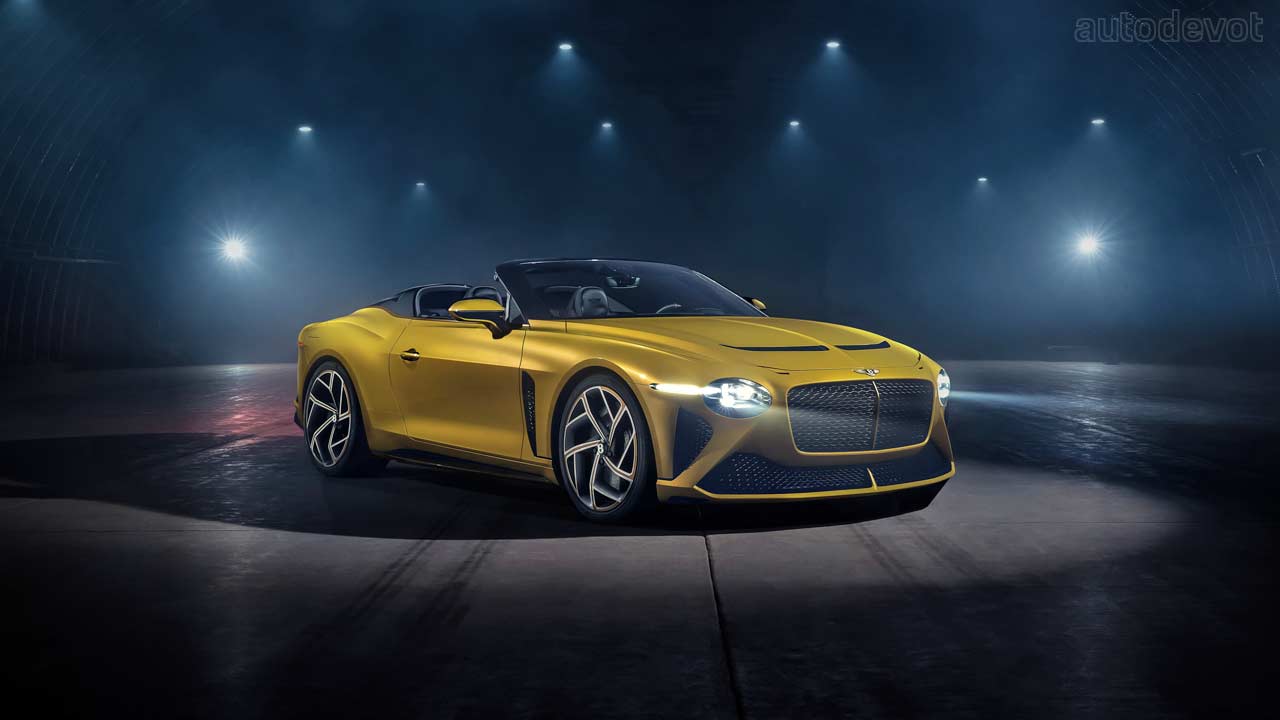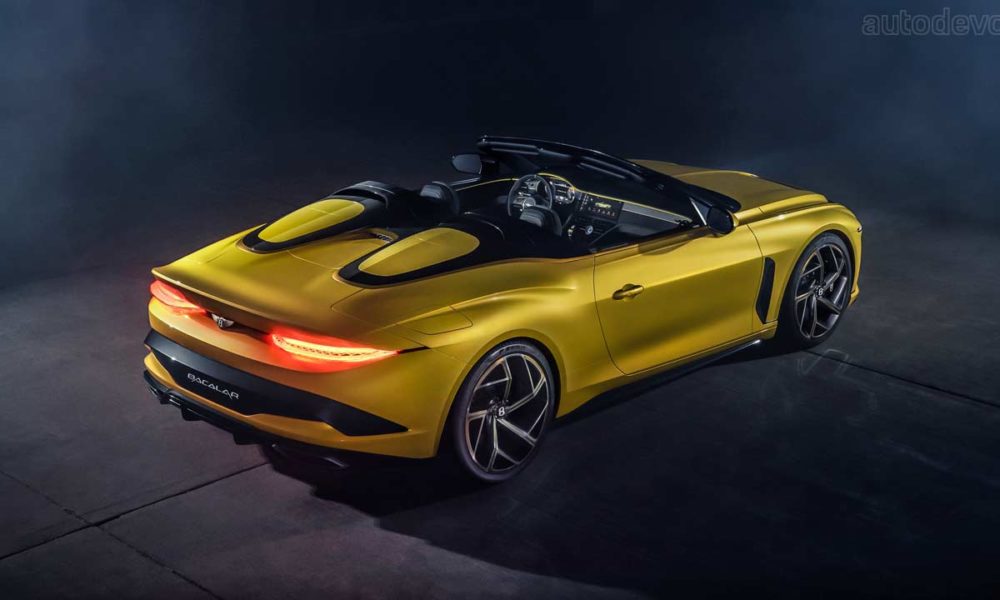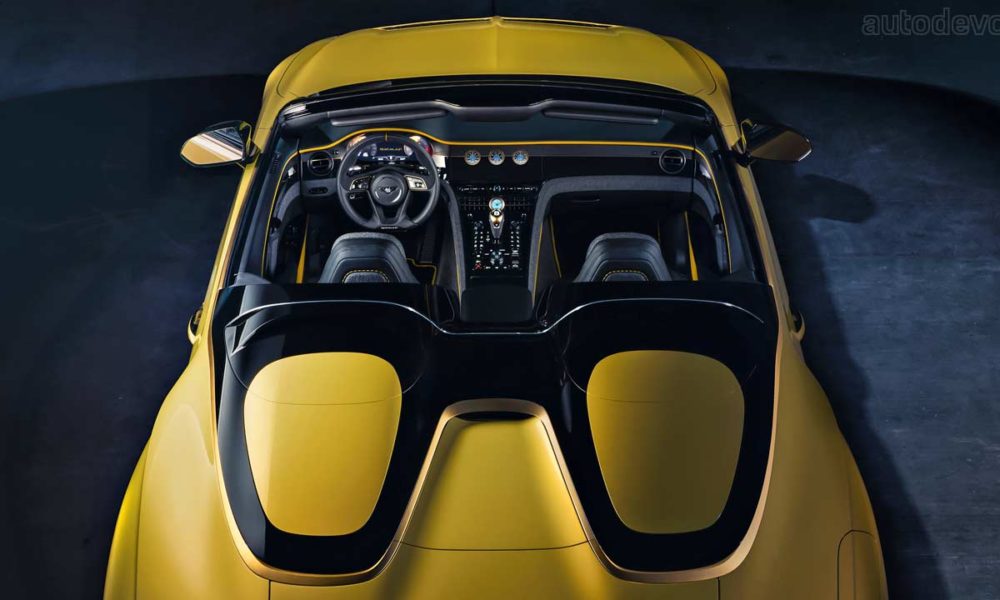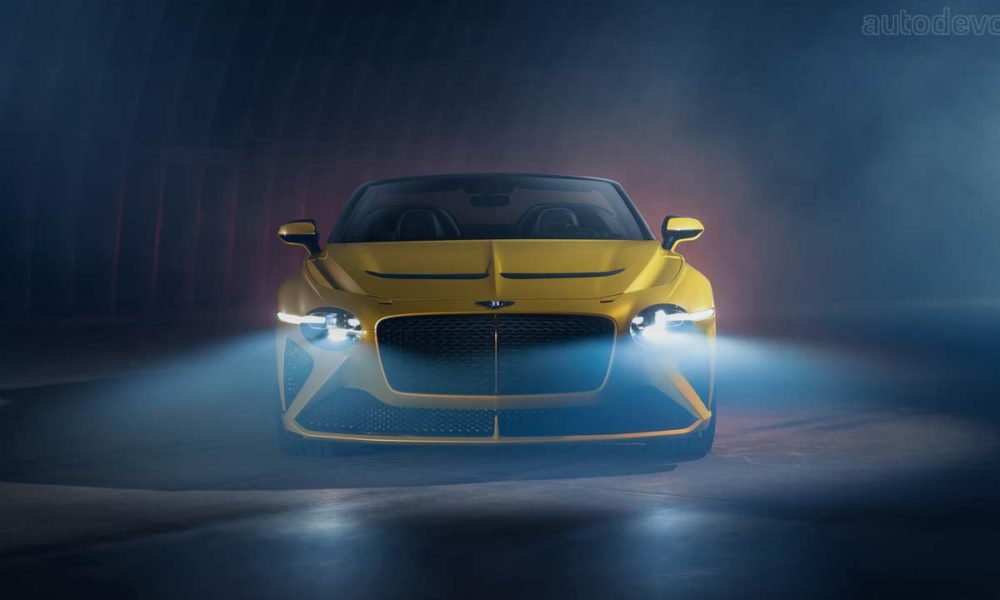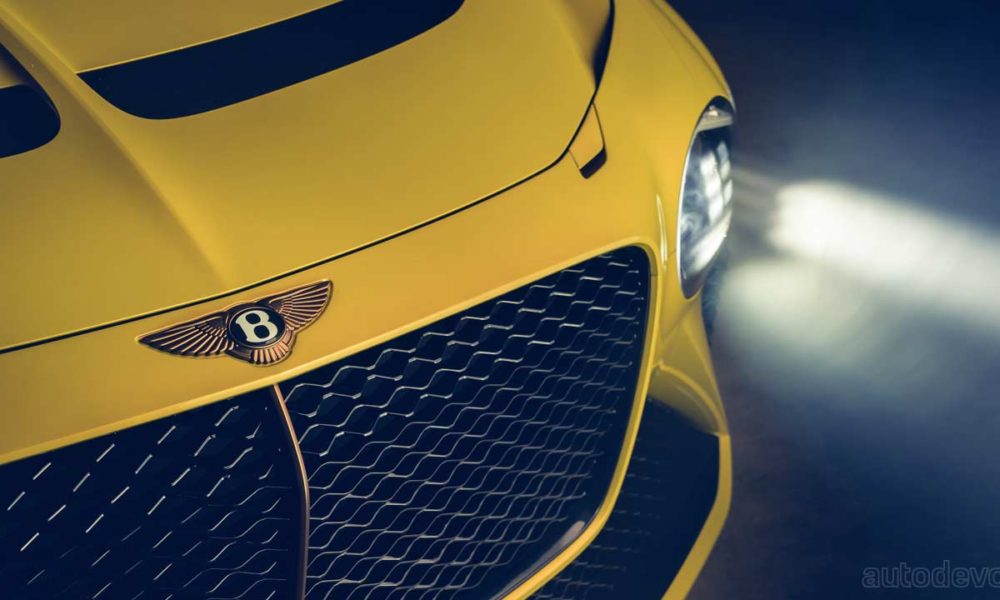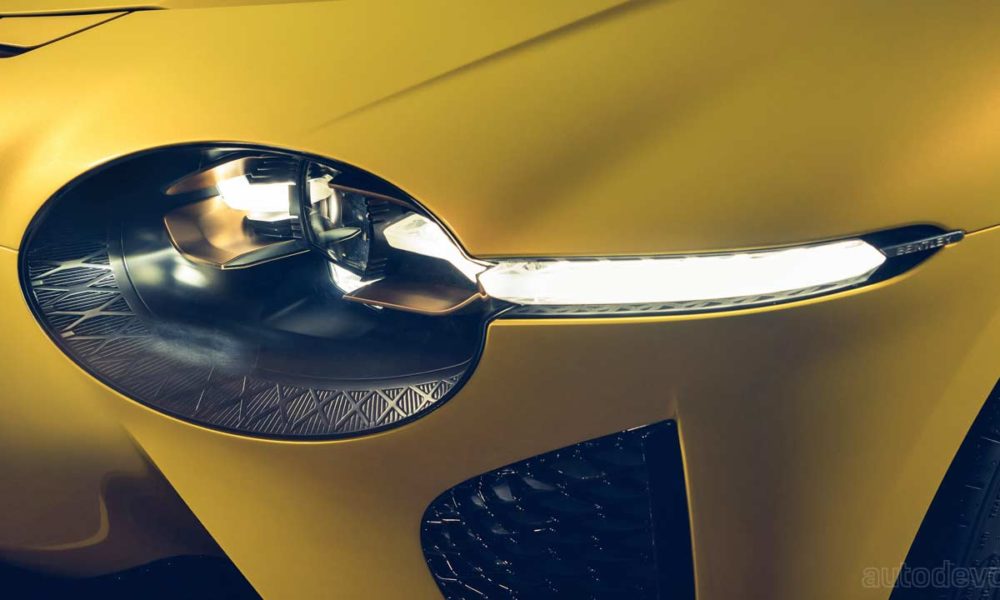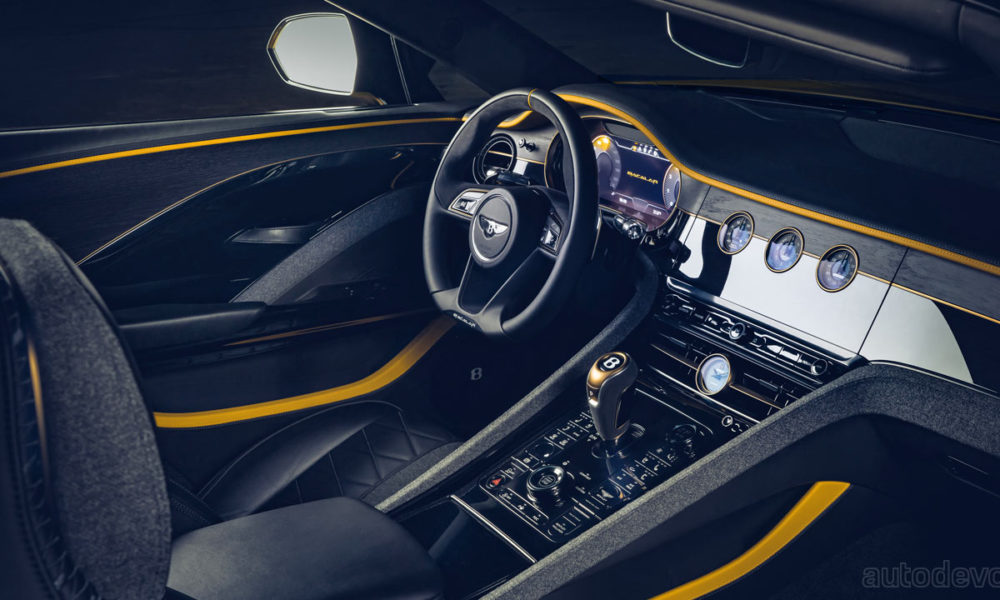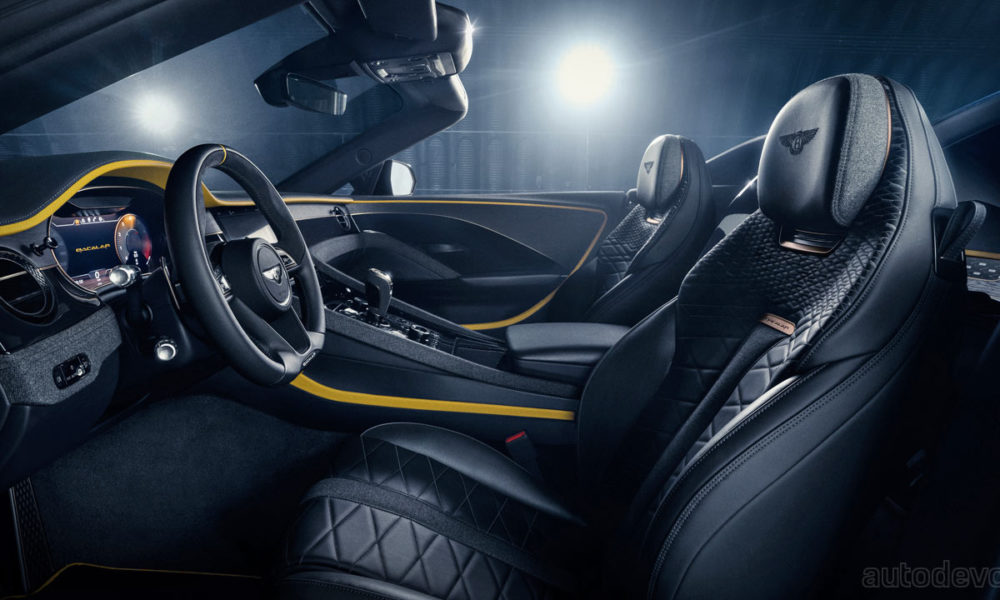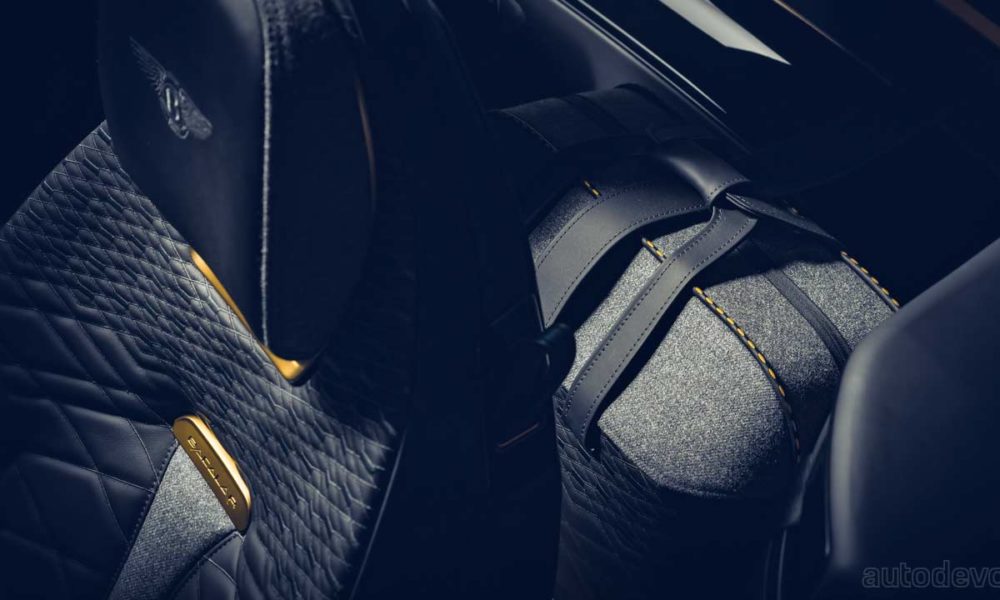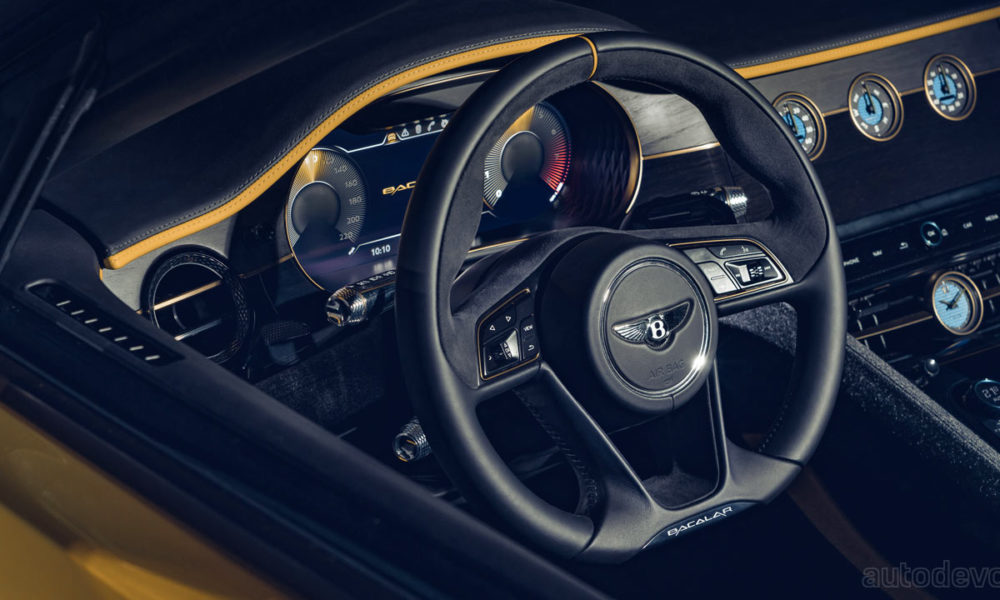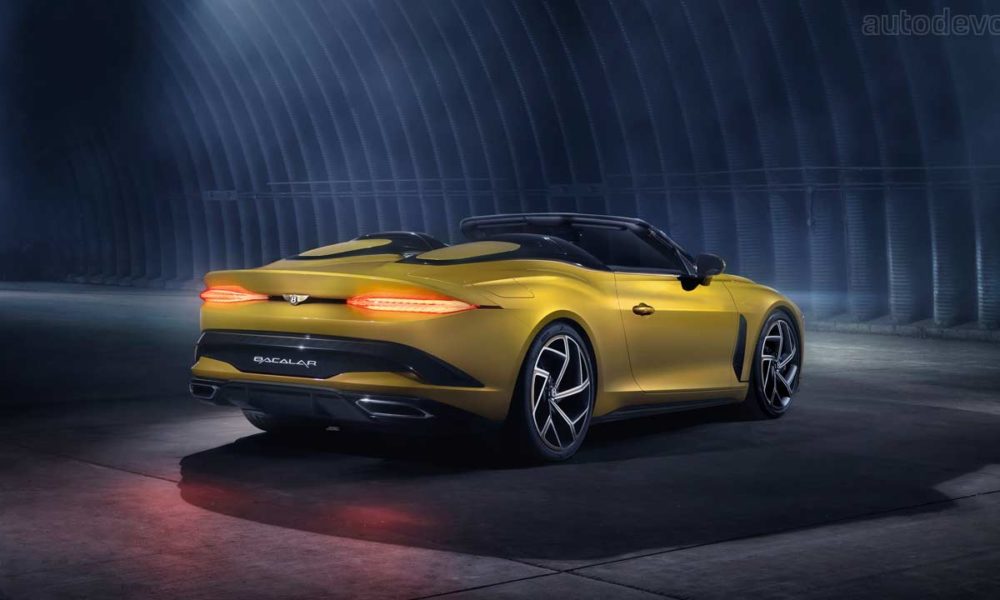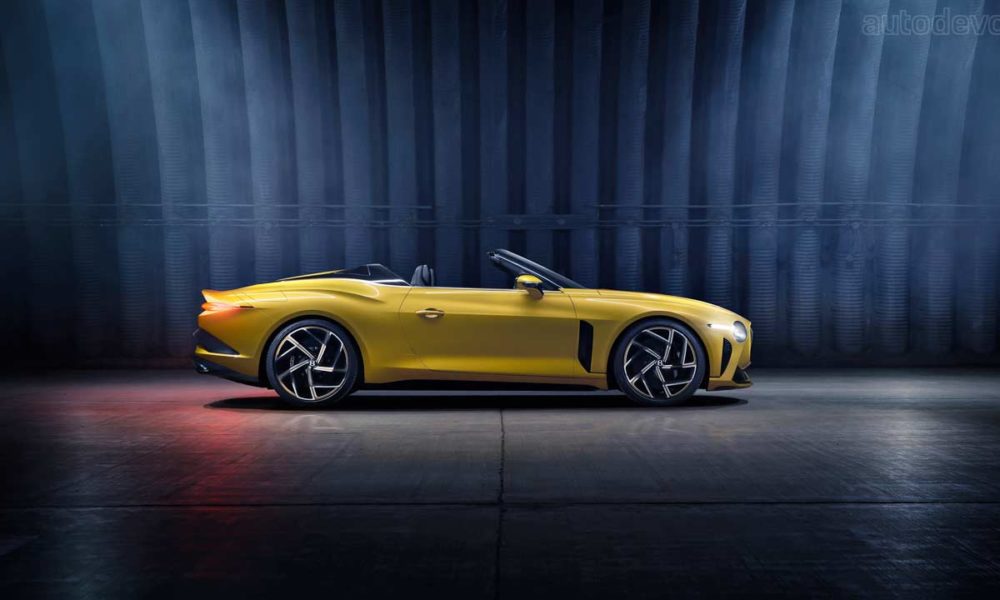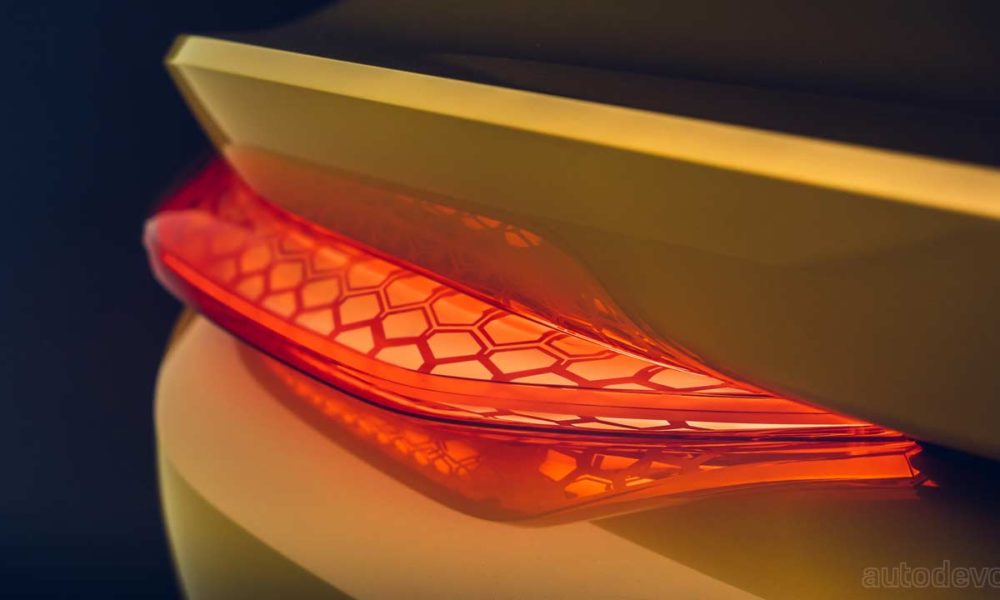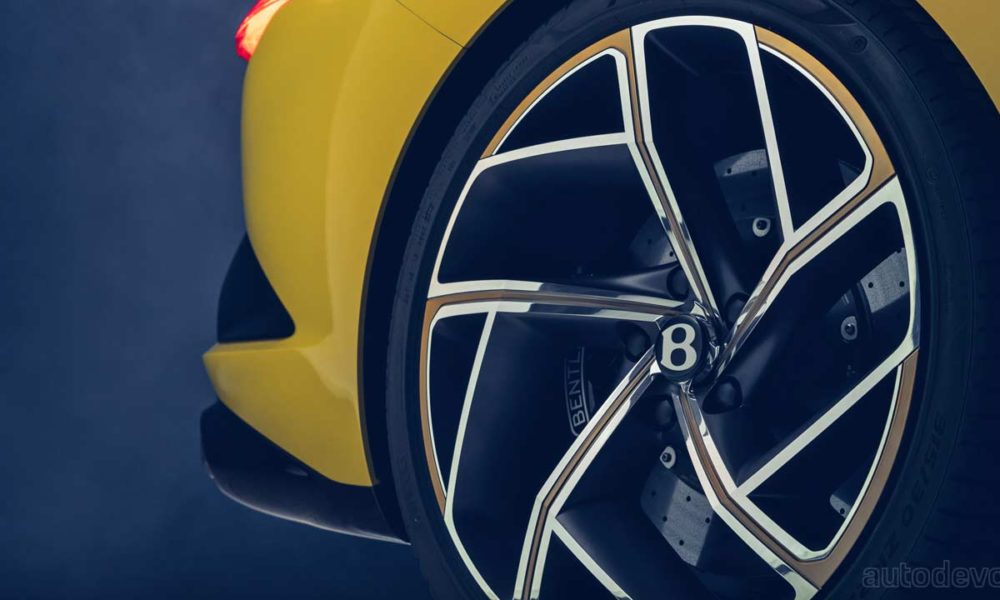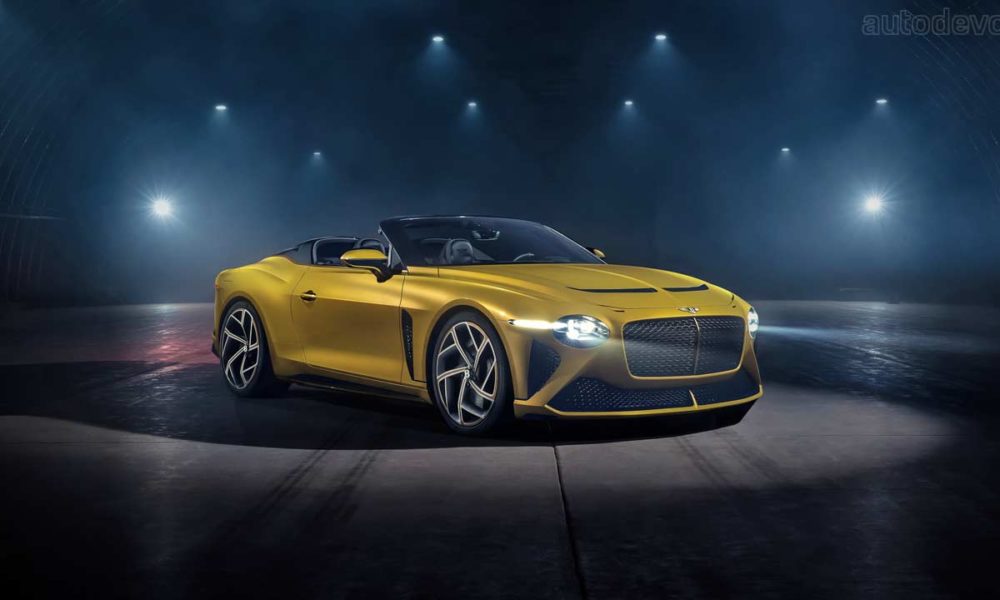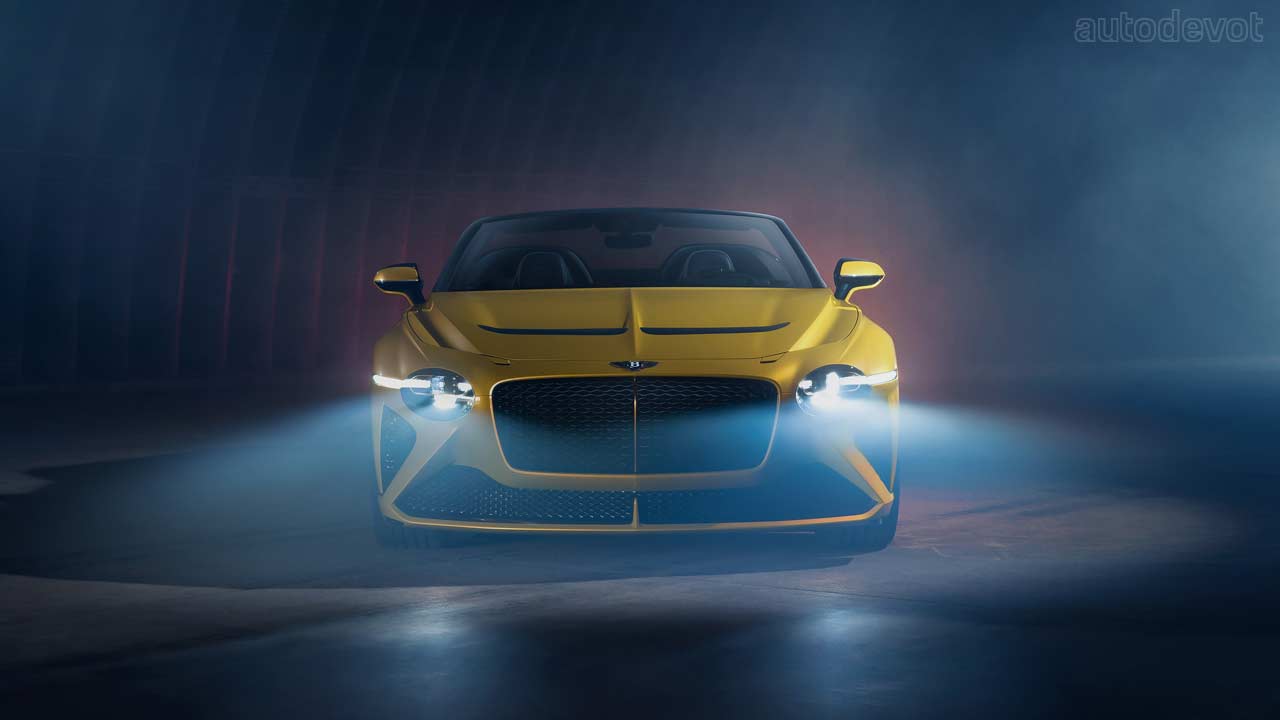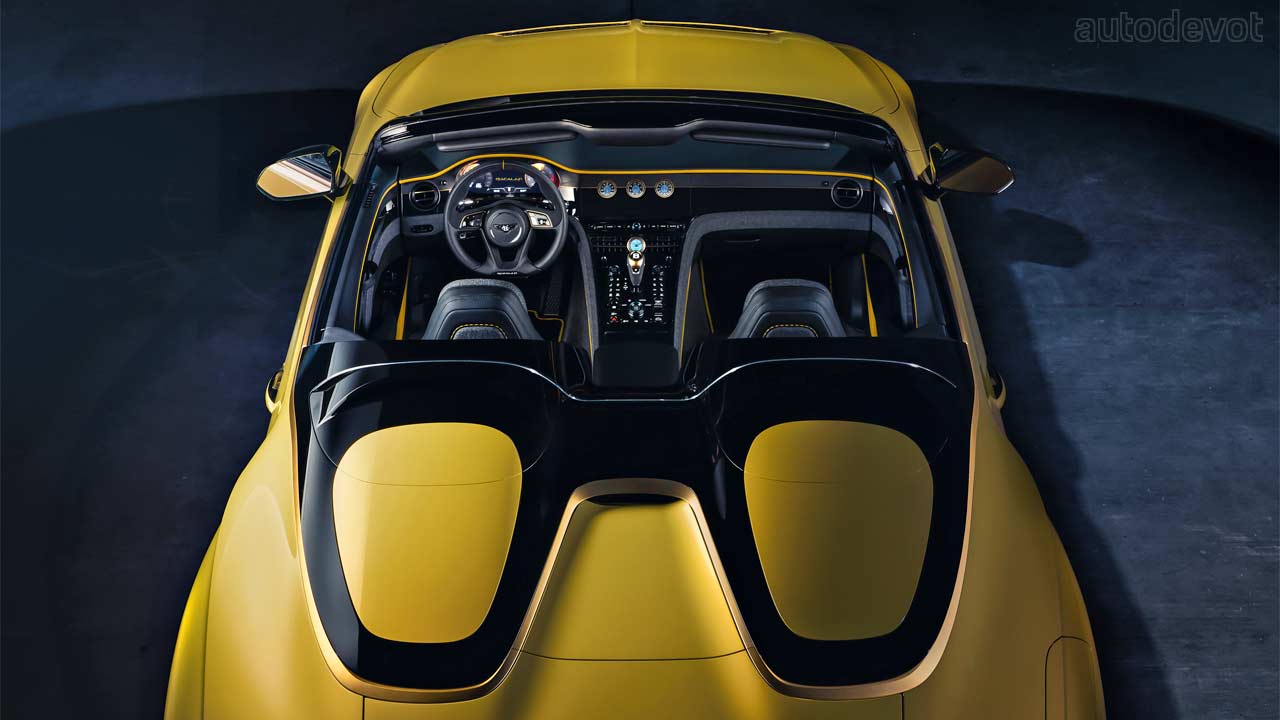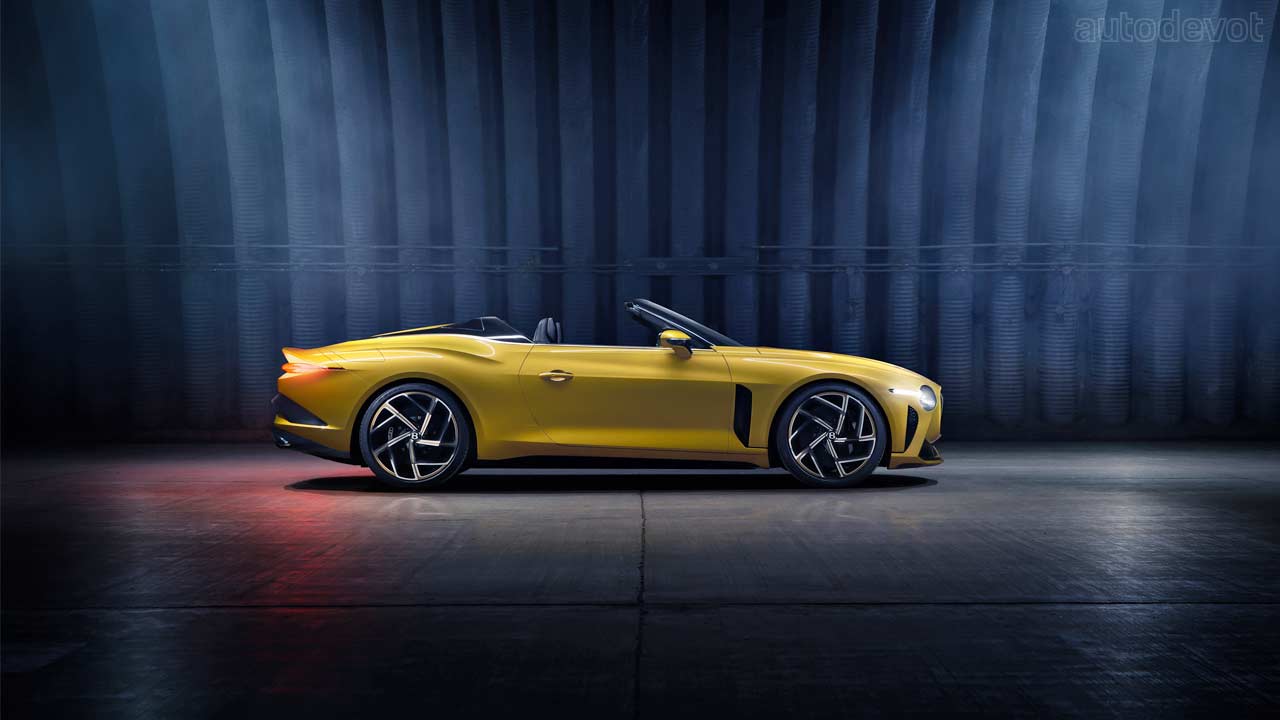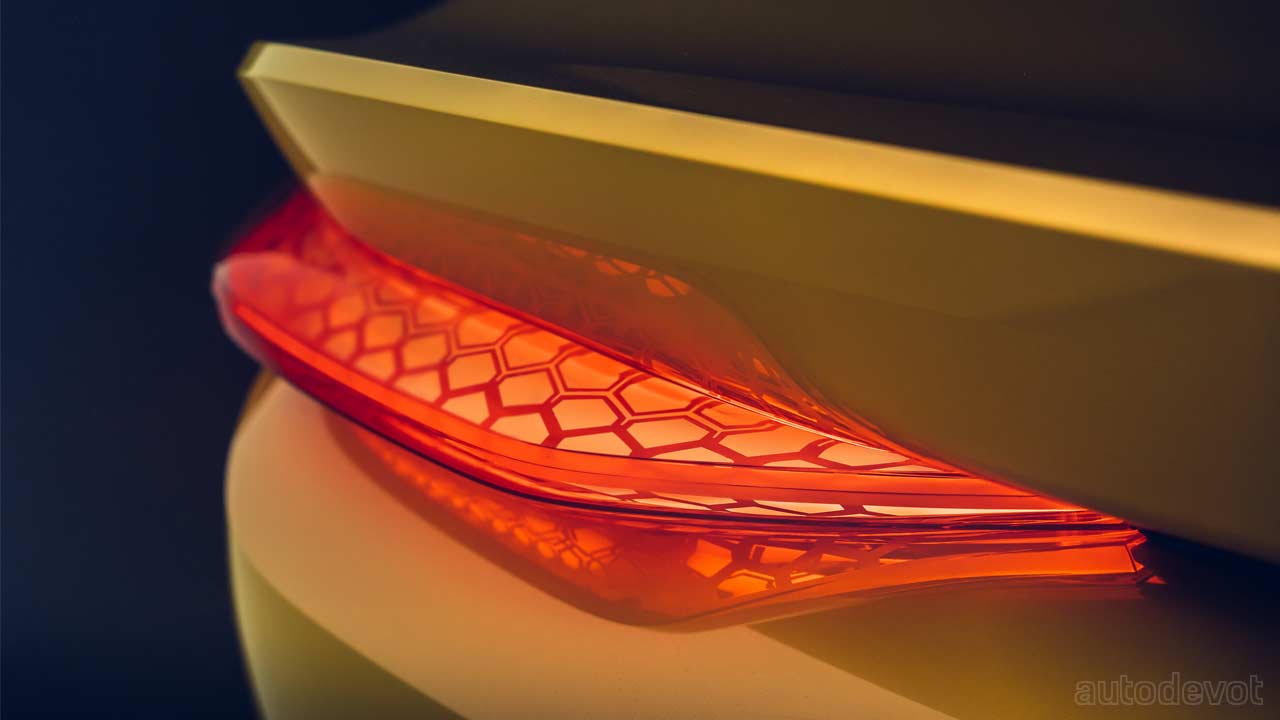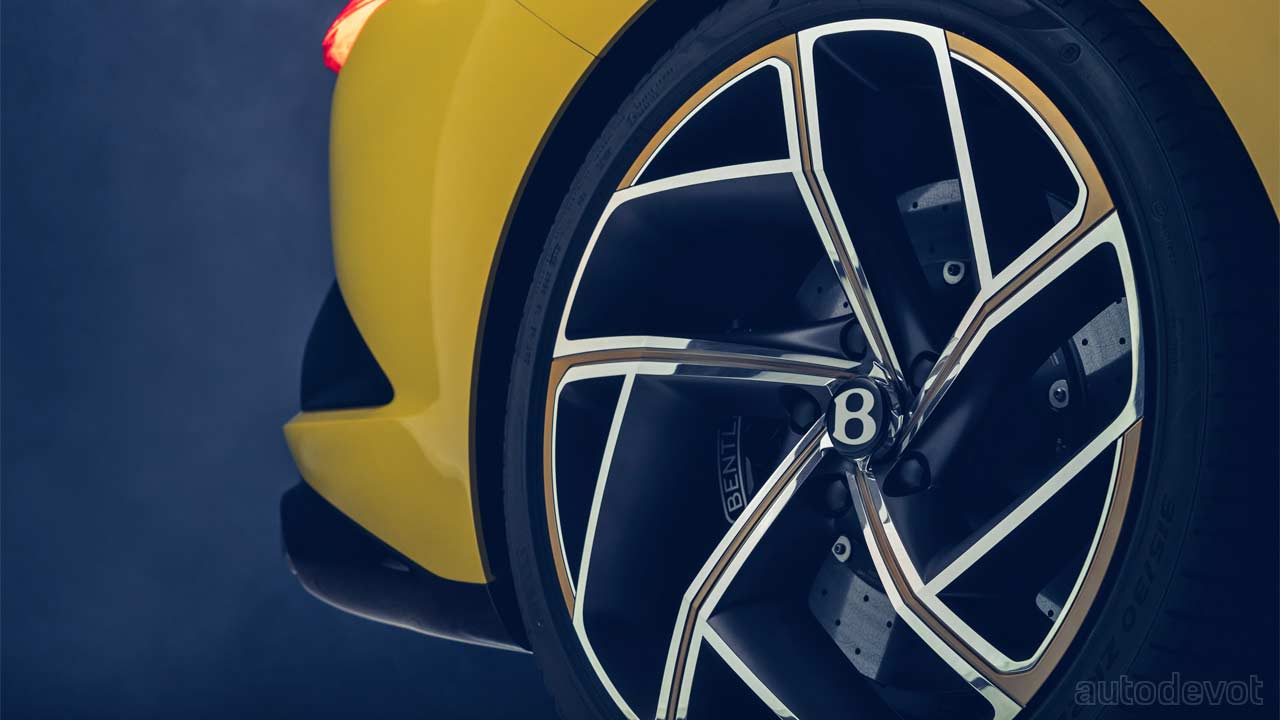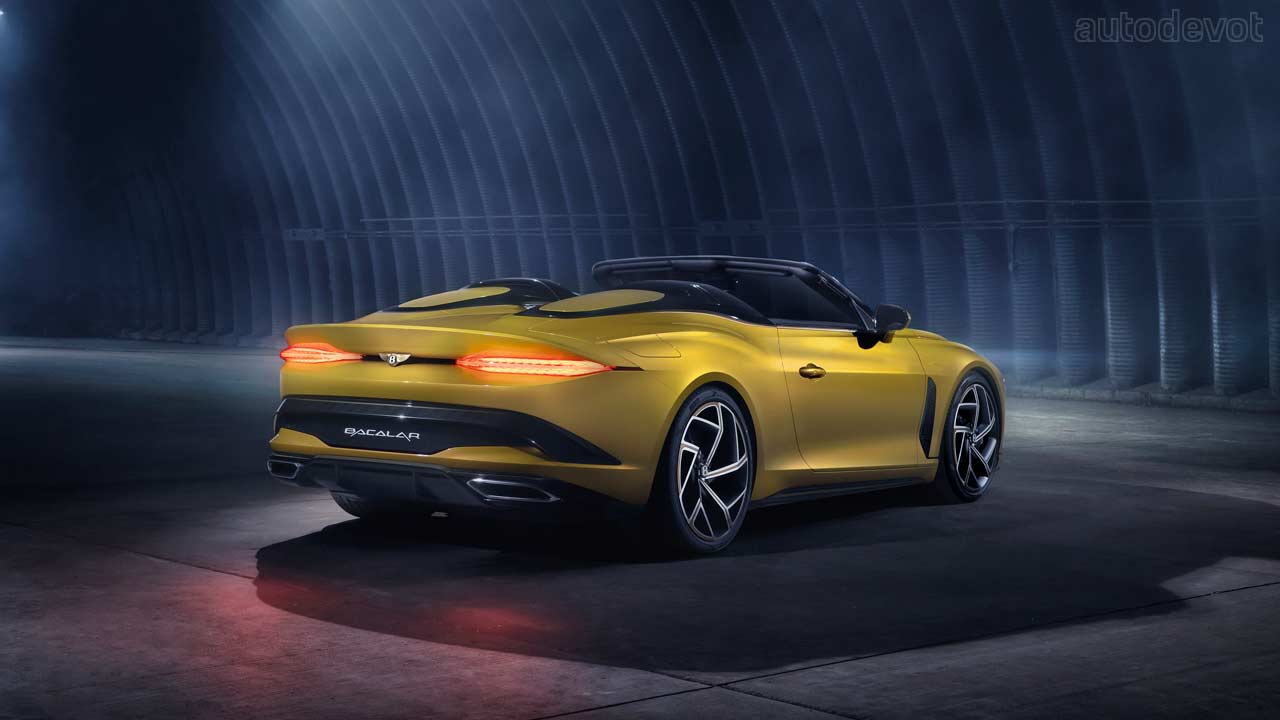We all know ‘Mulliner’ of today as Bentley’s bespoke commissioning division. However, what most people might not know is that the brand name dates back to the 1760s when the Mulliner family was commissioned to build and maintain carriages for the Royal Mail postal service. With the arrival of the motor car, the company stepped away from horse-drawn carriages to focus on coachbuilding for mechanical propulsion.
And that’s exactly what Mulliner of today wants to go back to. No, not to the horse-drawn carriages but to “the pinnacle of coachbuilding”. Their first (new) creation is this Bacalar, a limited edition open-top grand tourer. The name comes from a Mexican town which also has a lake of the same name.
The design as some of you guessed, comes from the EXP 100 GT concept that we saw in 2019. The front fascia including the headlamps, the grille and even the bumper design, all comes from the aforementioned concept.
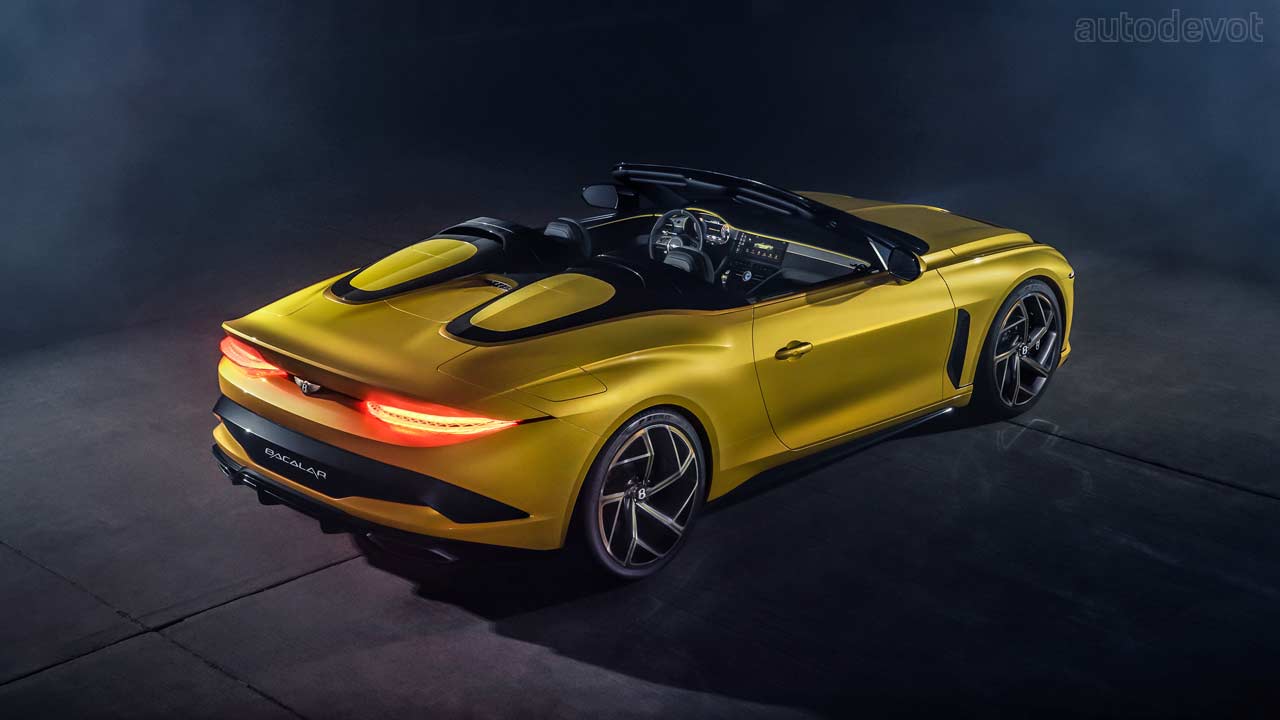
The taillamp detailing also comes from the EXP 100 GT. The rear clamshell and the top deck of the Bacalar are crafted from lightweight aluminium, while the doors and wings are of carbon fibre. Some of the components are made with 3D printing technology.
The Bacalar sits on extended haunches, with the rear track 20 mm wider than the Continental GT for a more muscular, sporting stance. They house bespoke, 22-inch tri-finish wheels.
The craftmanship also includes ethically-sourced materials such as paint containing ash from rice husks, natural British wool, and 5,000-year-old Riverwood sourced from the ancient Fenlands of East Anglia.
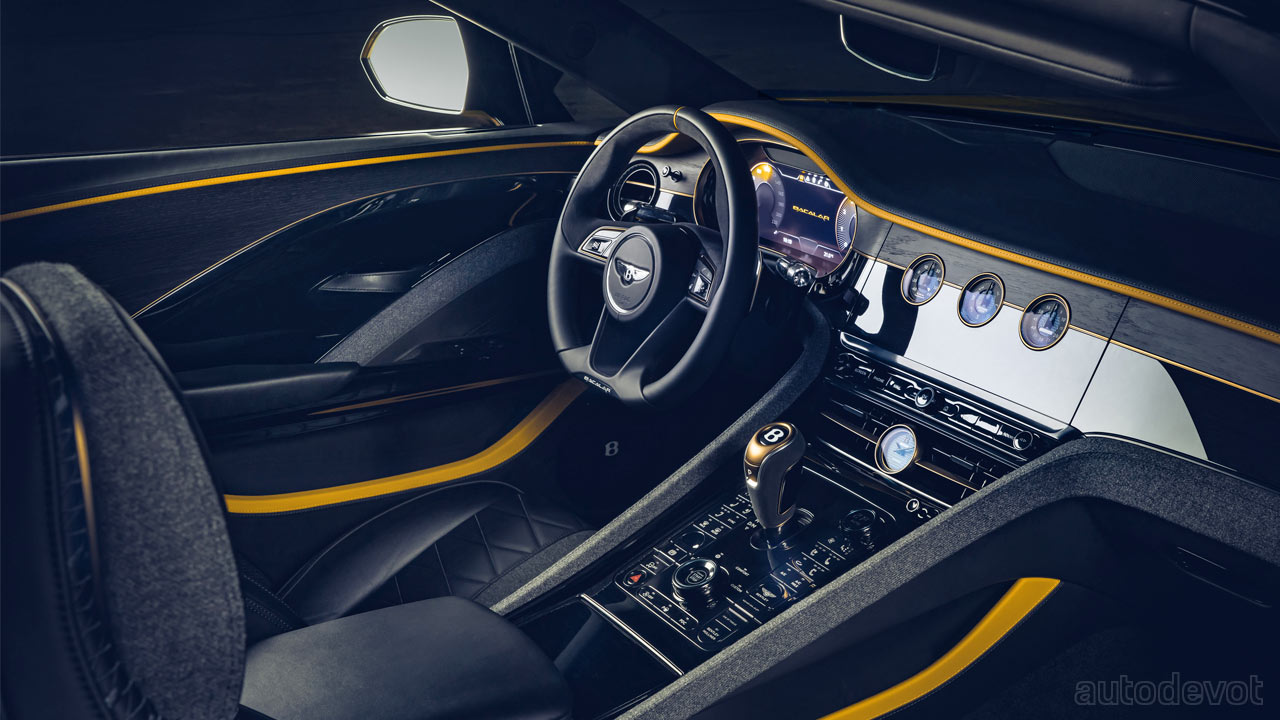
Which then brings us to the inside of the Bacalar. While it looks similar to the Continental GT, it’s all about the fine details and as mentioned, the use of unique materials is what makes this cockpit special.
A new, knurled pattern has been created for the ‘Bulls-eye’ vents – a pattern that has been repeated around the interior on areas such as the steering wheel controls, media and climate controls and even the intricate speaker frets. Each element has a fine, Dark Bronze detail to further enhance the finish, with Midnight Black Titanium detailing. The dark, anodized titanium finish on the main controls and a metallic dark bronze on the Bulls-eye air vents further highlight the details.
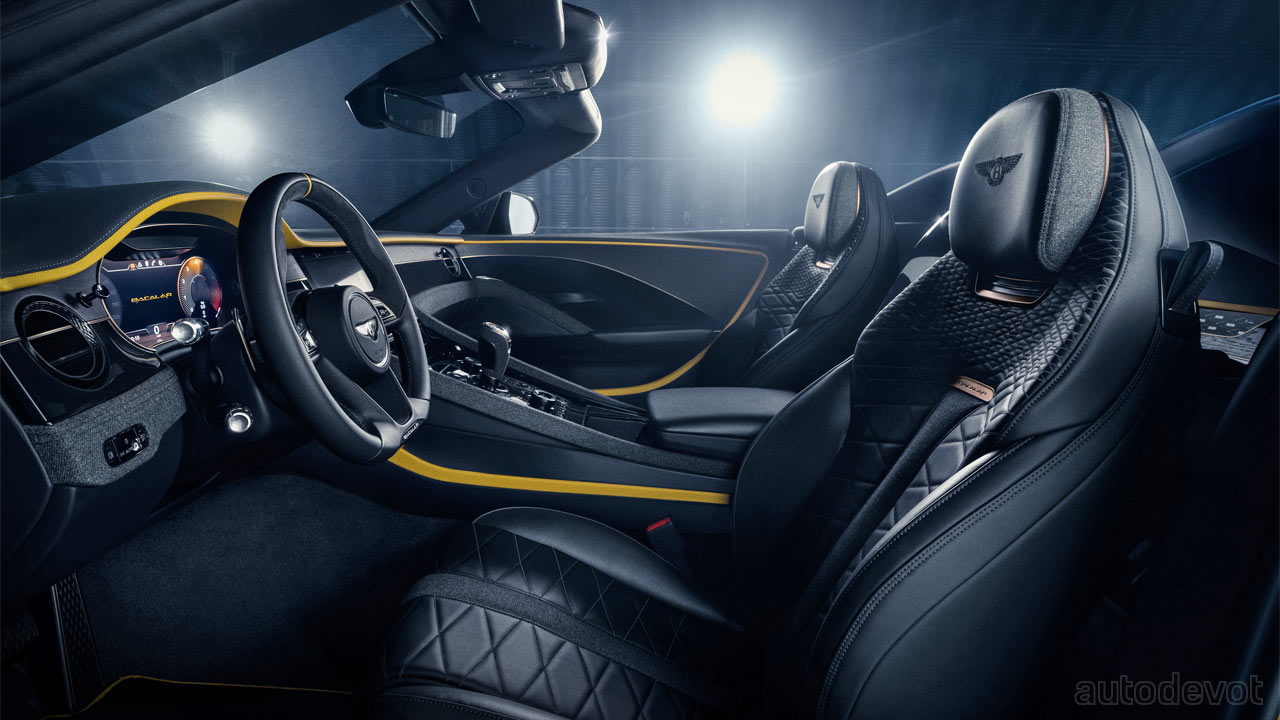
The finest Beluga leather is married with Bentley’s heritage semi-gloss leather and natural wool to create a dark ‘tone-on-tone’ character. For the first demo example, Mulliner’s Khamun accent leather highlights the cabin and matches the Yellow Flame exterior paintwork. The flat-bottom steering wheel features Alcantara inserts with a Yellow contrast top marker.
The gear-shifter is also finished in Alcantara with Dark Bronze detailing. Unique leather strap door and seat releases, unique digital instrumentation and a unique key design further highlight the artwork. In case I haven’t mentioned already, the Bacalar is limited to just 12 units. Each car also features a unique clock face with individual one-of-12 badging.
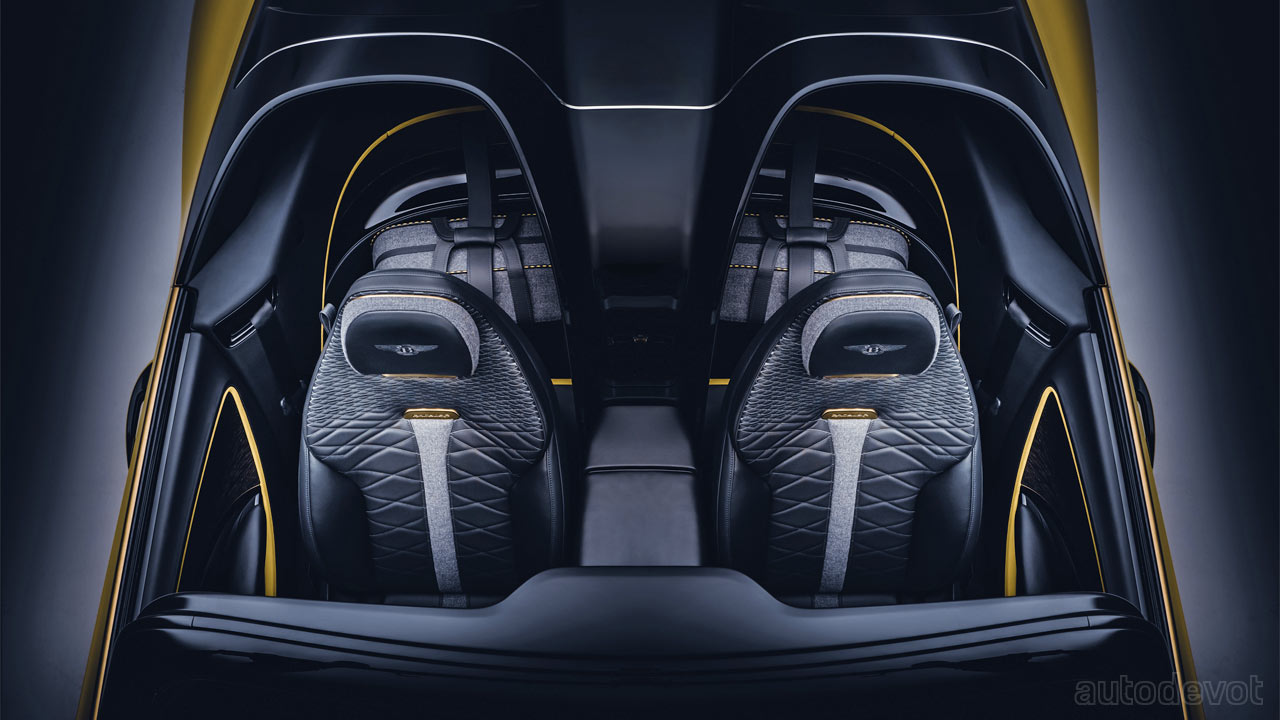
The rear seats have been deleted and replacing them is a bespoke Schedoni luggage, the luxury Italian brand with nearly 140 years of experience. Created exclusively for the Bacalar, the optional luggage perfectly matches the trim and materials of the cabin.
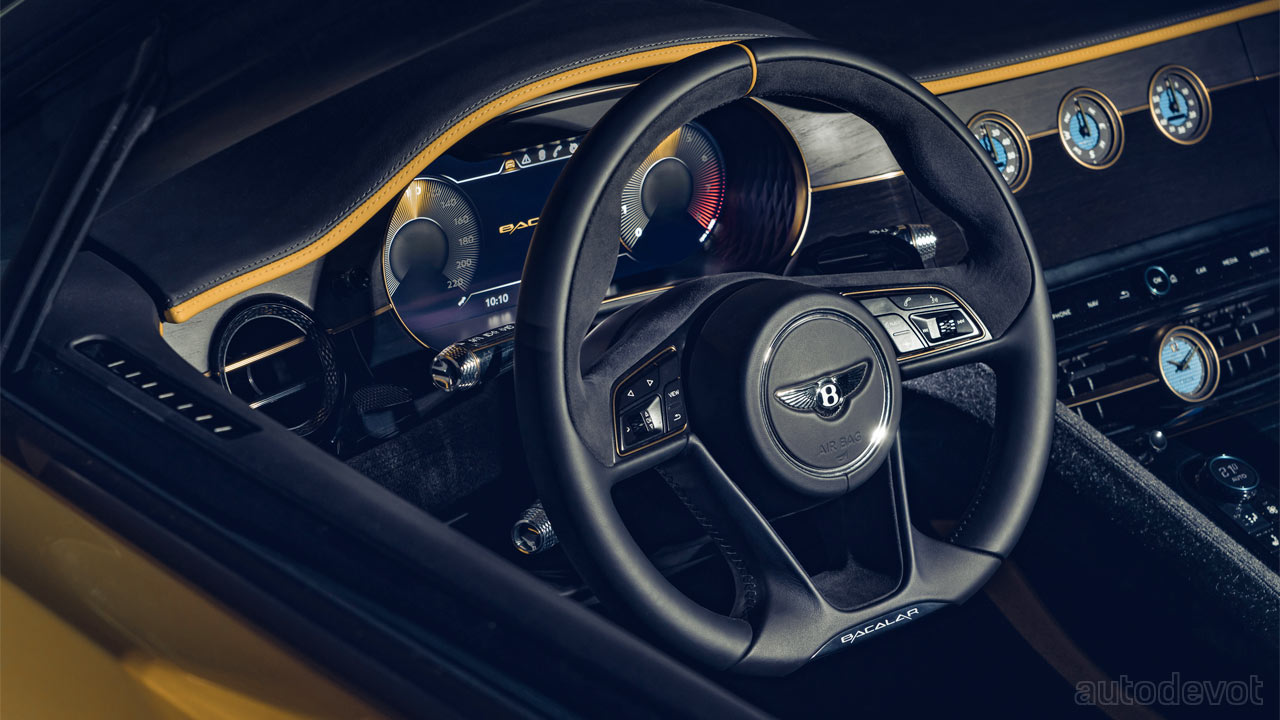
While it is true that most of the 12 Bacalars will be displayed as a piece of art in their respective collectors’ garages, it has an engine and the car theoretically moves too. The engine is the famous 6.0-litre twin-turbo W12 that puts out 650 bhp and 900 Nm (667 lb.ft) of torque, and is paired with an 8-speed DCT.
An active All-Wheel-Drive system varies the torque split between front and rear wheels. It allows the Bacalar to be RWD as much as possible during normal driving.
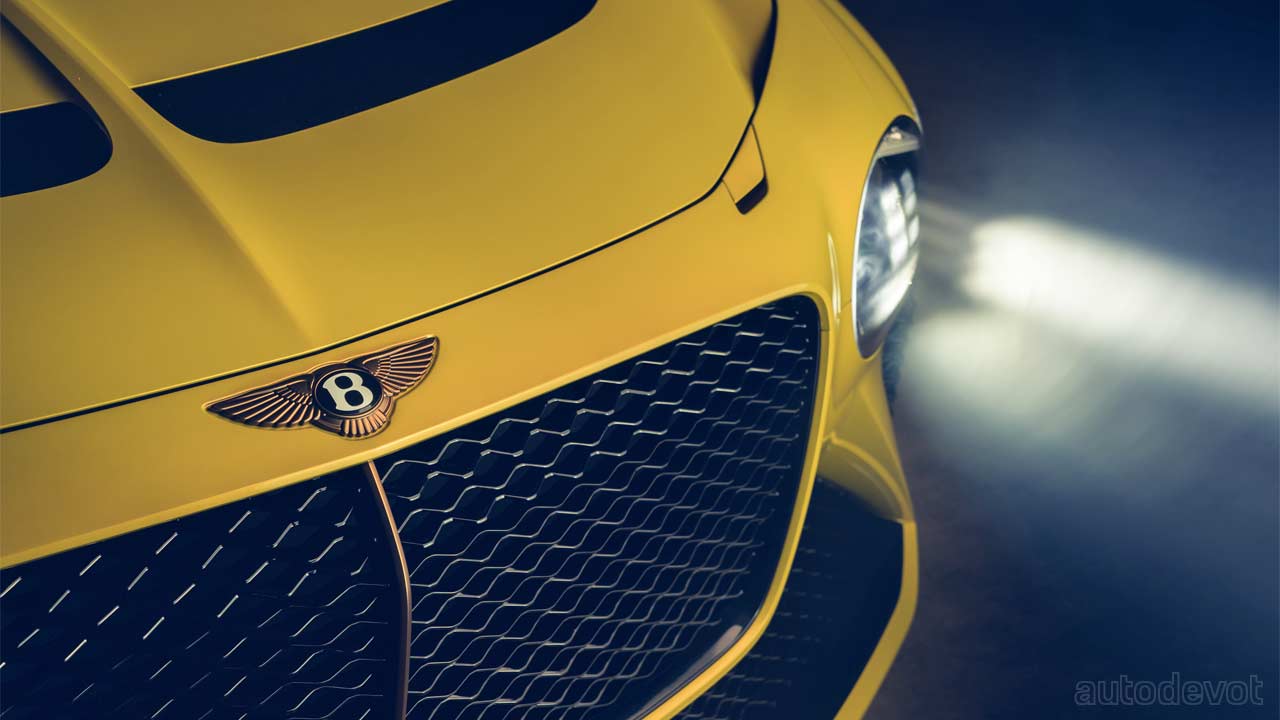
For those who are scratching their heads about the rice husk ash, it is used to create a reflective pigment that enhances the contours of the sculpted exterior in different lights.
The pigment is synthetically-manufactured silicon dioxide platelet coated with iron oxide. This synthetic process uses rice husk ash – a by-product from the rice industry – to create 90 percent pure silicon dioxide, thereby reducing rice husk landfill waste.
Each Bacalar will be hand-crafted in Mulliner’s dedicated workshop at the Bentley factory in Crewe – claimed to be the world’s first certified carbon neutral factory for luxury car production.
Bentley Mulliner also announced new three portfolios: Classic, Collections and Coachbuilt. The 12 new Blowers announced in 2019 will be part of the Classic.

Leave a Reply
Note: Comments that are unrelated to the post above get automatically filtered into the trash bin.
